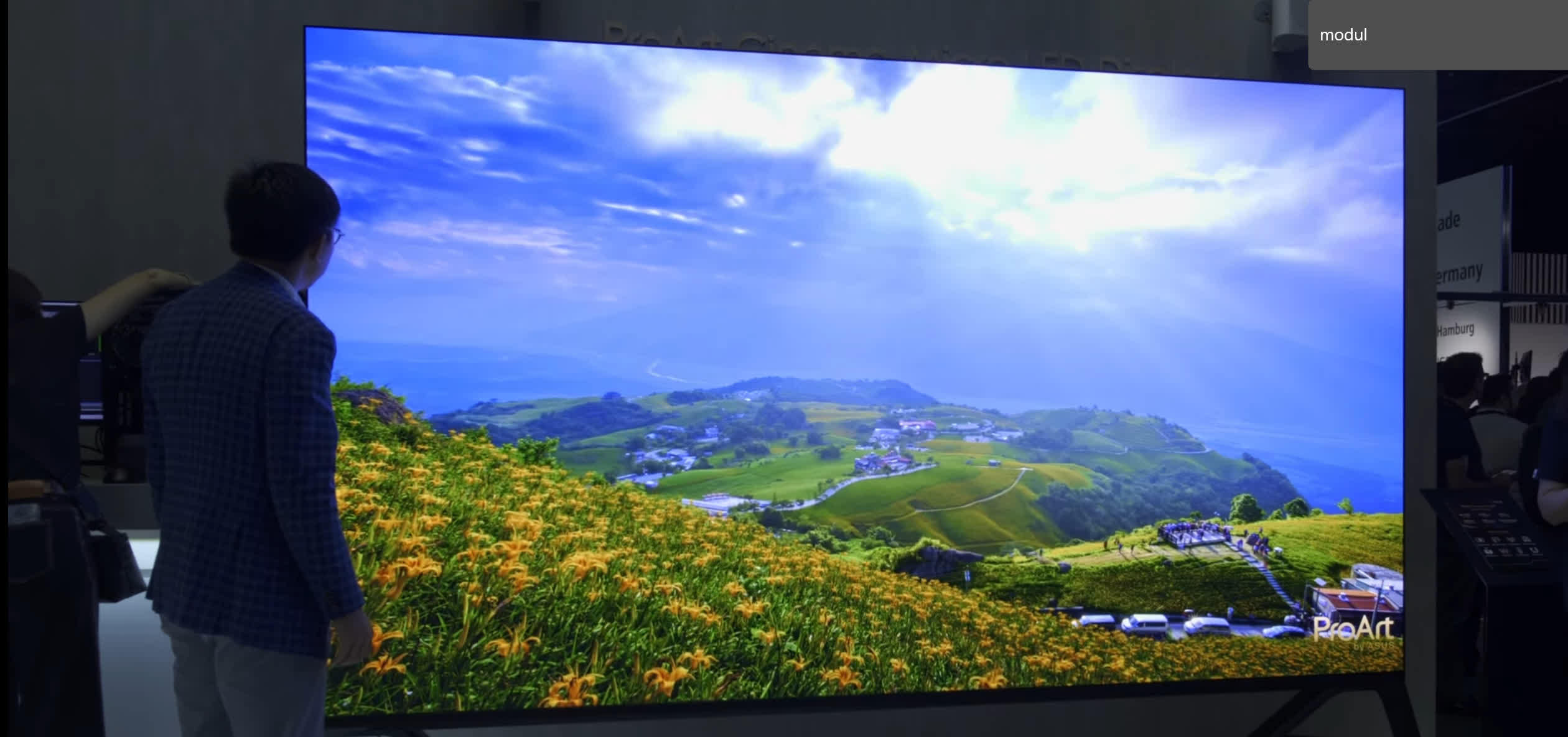In brief: More details have emerged regarding Asus' monstrous 135-inch ProArt Cinema PQ07 display that was unveiled at Computex 2023 in June. It shouldn't come as a surprise to learn that this MicroLED behemoth is expensive, $200,000 expensive.
HDTVTest's Vincent Teoh reported on the ProArt Cinema PQ07 display from the IBC event in Amsterdam, writes Notebookcheck, revealing some of its specifications and the price. In addition to the 135-inch size, the display uses MicroLED tech. Like OLED, MicroLED is self-illuminating, offering similar inky blacks and amazing contrast - 1,000,000:1, in this case.
MicroLED has the added advantages of lasting longer, having little to no danger of burn-in, and being brighter; the ProArt Cinema PQ07 can reach 2,000 nits. Elsewhere, the display offers 95% DCI-P3 coverage and a 4K resolution, giving it a pixel pitch of 0.7815mm. It's speculated from the video footage that it has a refresh rate of 60Hz.
Asus advertises the $200,000 product as being ideal for professionals such as colorists and for virtual production, though it could also be used for live streaming, home cinema setups, and even vehicle driving simulations.
MicroLED screens are modular, which allows for some cinema-like sizes. Sadly, their prices remain out of reach for most people. LG recently unveiled the MicroLED Magnit TV, a set that measures 118 inches and costs $237,000. It's still cheaper than the larger, 136-inch model that will set you back $300,000.
If that sort of money doesn't worry your bank account, there's always the 165-inch foldable MicroLED TVs from Australian manufacturer C Seed that rises up out of a floor and unfolds. These cost $400,000.
For those with the sort of money that puts them on Bloomberg's Billionaires Index and homes bigger than castles, there are Samsung's The Wall MicroLED TVs. They come in a variety of sizes, including a 219-inch version - or 18.28-foot diagonally - that costs $800,000.
Eventually, the price of MicroLED screens will come down and we'll see more products sporting the technology that are within reach of us non-millionaires/billionaires.
